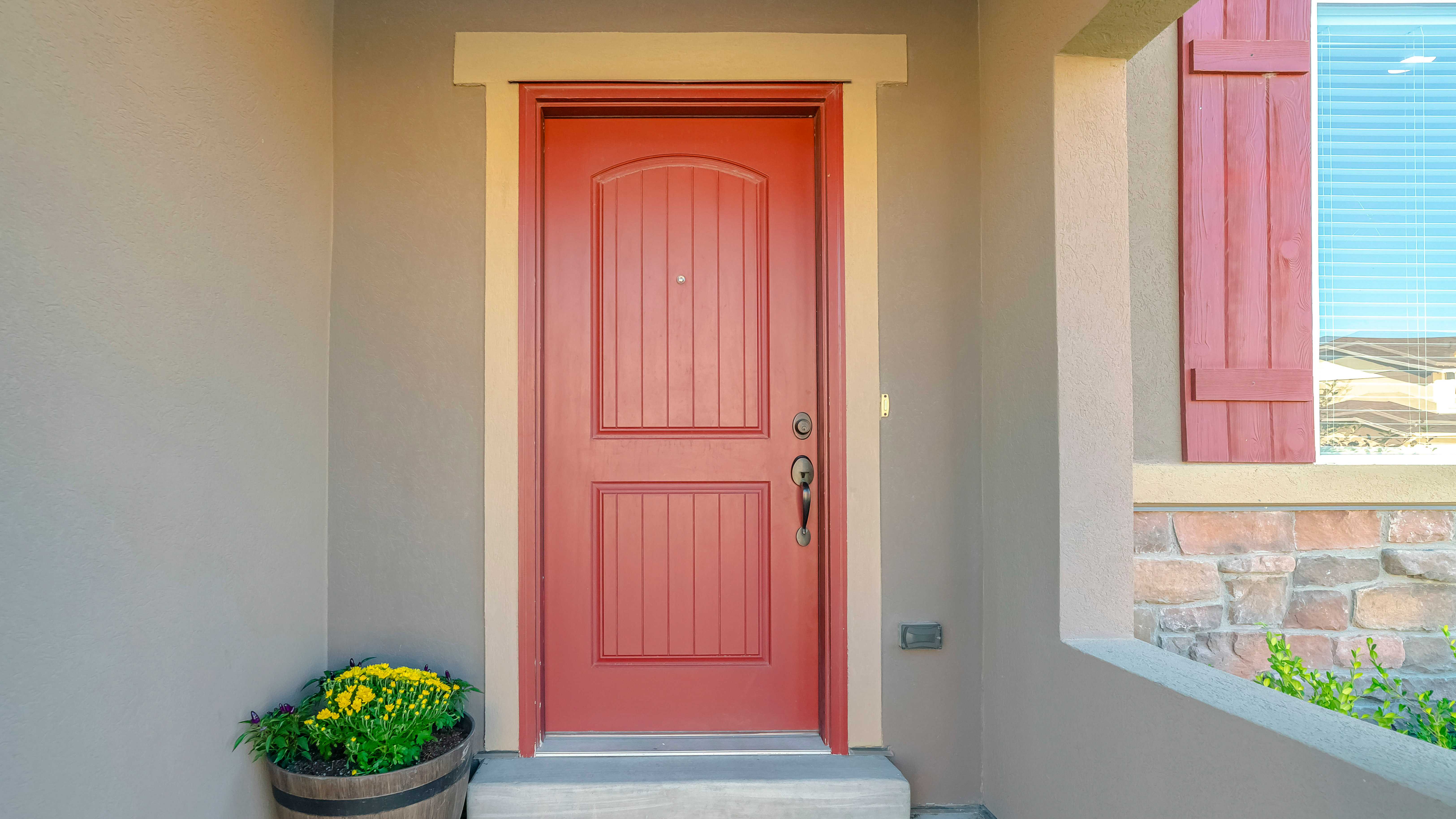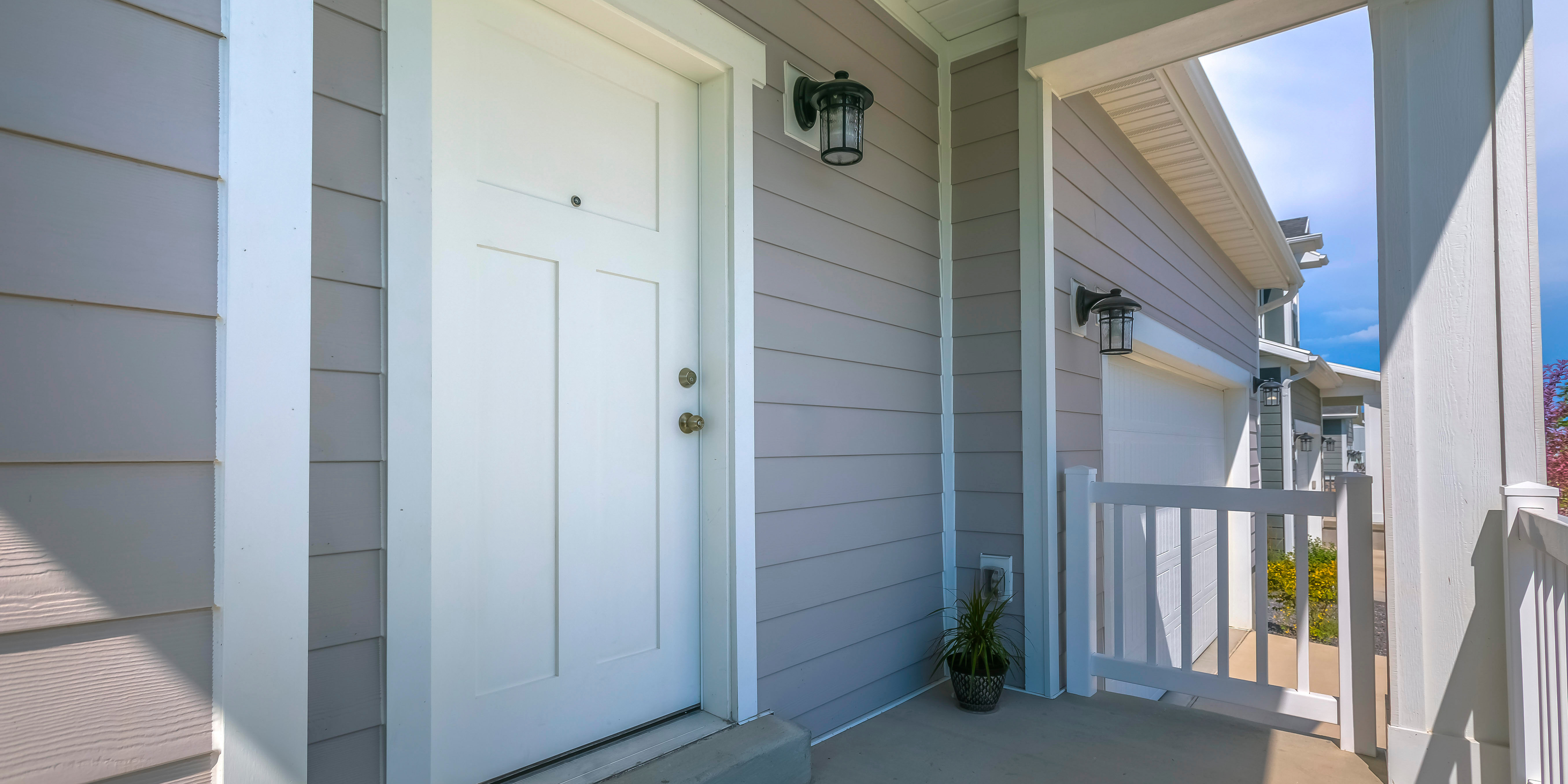What factors affect the energy efficiency of an exterior door.
There are several factors to consider when choosing an exterior door to ensure that you get the most energy-efficient option. The material of the door is one of the most important considerations, as different materials have different insulation values and some are even EnergyStar rated. We’ll discuss the various materials shortly.
Keep in mind, however, that different materials will vary in cost. Since you’re already trying to cut on your energy bills, you might want to consider how much the doors cost.
Additionally, the weatherstripping on the door can play a role in its energy efficiency and how well it seals out the weather. If you have older doors on your home, you may consider upgrading them with new weatherstripping for a better seal. You can also find weatherstripping specifically designed to keep the cold out in the winter and the heat out in the summer.
The different types of exterior doors.

Modern residential doors can be made out of just about anything. However, we’re going to focus on the most common materials. These materials include fiberglass, solid wood, and steel. Some glass-panel options can affect the energy efficiency of the doors.
Fiberglass doors.
Fiberglass doors are a popular option for many homeowners because they are durable, energy-efficient, and cost much less than other materials. While fiberglass material is a good insulator, these doors also have insulation built into the core. This means that it can help keep the heat in during the winter and the cool air during the summer.
One of the best parts of fiberglass is that they’re resistant to weathering and won’t warp or rot from termites or water damage. Over the door’s life, you’ll spend less time and money on maintenance compared to steel and wood.

These doors are fully customizable as well. For example, if you like the natural look of solid wood doors, you can get fiberglass with a wood grain texture and painted to match a stained wood. It’s hard to tell the difference at that point.
Solid wood doors.
When most people think of elegant entryways, they think of solid wood doors. For a good reason too. The elegance of expert craftsmanship makes a statement when you first approach a home.
However, due to their construction, don’t expect additional insulation in the core of a solid wood door. The wood itself is the insulation. It’s worth noting that wood doors do a great job at insulating. They’re not as good as their fiberglass or steel counterparts.
One of the most significant drawbacks of solid wood doors, though, is the maintenance. They’re susceptible to damage and rot, unlike fiberglass. If water pools around the base of the door or water continuously splashes on the door, the door’s lifespan can be dramatically reduced.
Sure, you’ll get the elegance with solid wood, and they will last a long time; they’re just lacking compared to fiberglass and steel.
Steel doors.
Steel doors are a great option considering the price. They’re less expensive than solid wood, and they’re one of the most durable types of doors.
While steel is generally a good conductor of heat, meaning it will allow heat to flow into and out of your home much better, they’re also well insulated. So they’re more energy-efficient than a solid wood door but not as efficient as a fiberglass door.
These doors are relatively robust and require very little maintenance. They don’t get damaged easily, and you don’t have to worry about rot. However, they are susceptible to rust, unlike wood or fiberglass. Like the wood doors, if they’re frequently exposed to water, you may encounter a rust problem in a few years.
Glass paneled doors.
Solid doors are great, but sometimes you just want some natural light to shine through. Manufacturers can make all types of doors with glass panel inserts to let in more light. These glass panels will affect the energy efficiency, however.
Whether you get a half glass or a three-quarter glass-paneled door, you will let more heat in or out with that glass.
There are some options for the glass if you want to retain as much energy efficiency as possible. You can opt for double-paned glass or Low-E glazing. These options will minimize heat transfer through the door but not do as much as a solid door.
How to choose the most energy-efficient type of exterior door for your home.
When looking for new exterior doors for your home, you have to consider the style, energy efficiency, maintenance, and cost of the door. As noted, some doors excel in different areas.
You can’t beat solid wood if you want a truly timeless and elegant look. Of course, you can get fiberglass that looks like wood, but there’s no substitute for the real deal.
However, if you want the most energy-efficient type of exterior door, then fiberglass is your best bet. Fiberglass is a poor conductor of heat, and the cores are well insulated. Compared to the other doors, these are typically the least expensive.
Choosing what type of exterior door to install for your home is essential. We recommend that you consider what factors are most important to you and what will provide the best value for you. However, when you want to know what type of exterior door is the most energy-efficient, you can’t beat fiberglass with steel shortly behind them.
